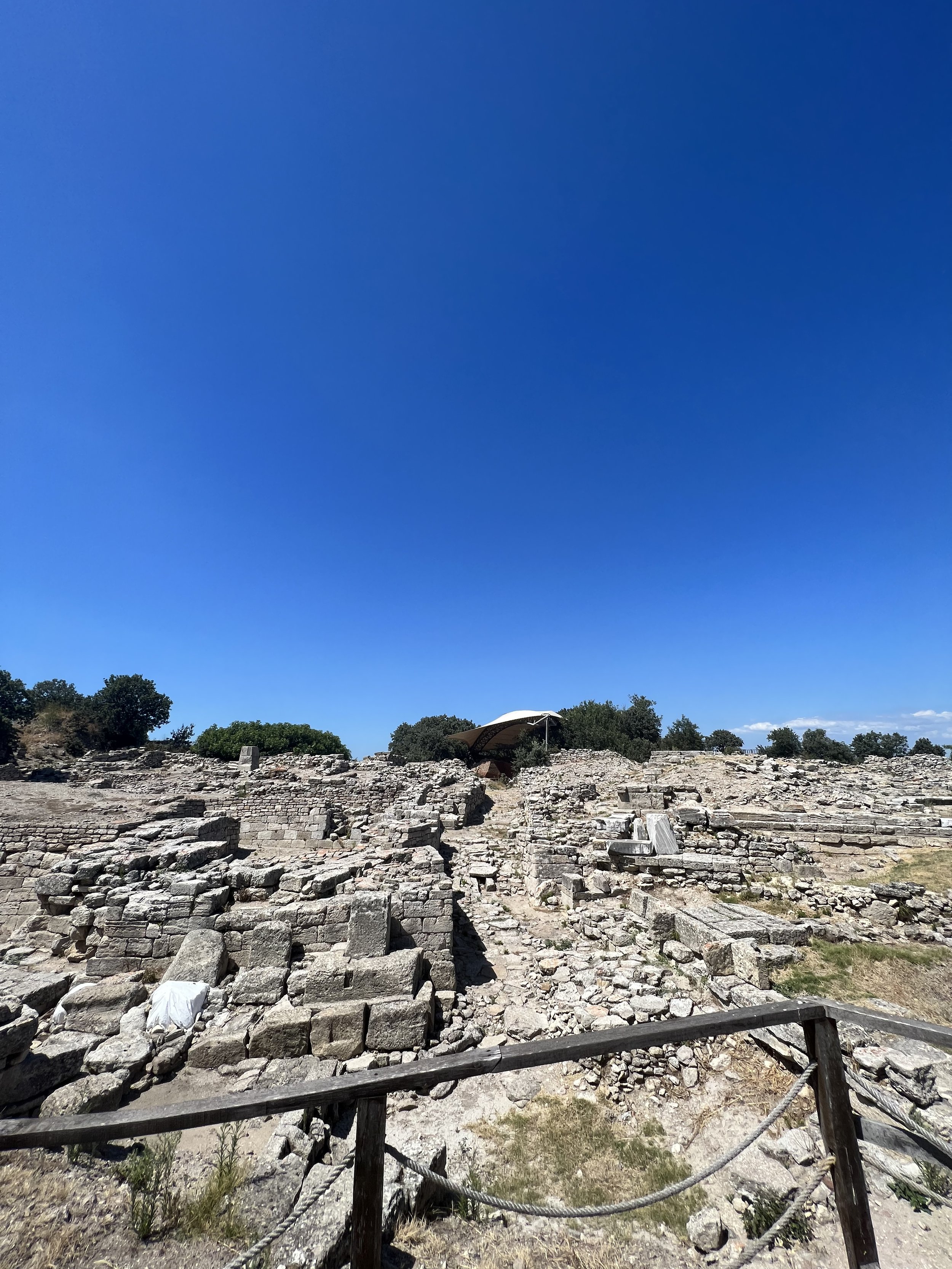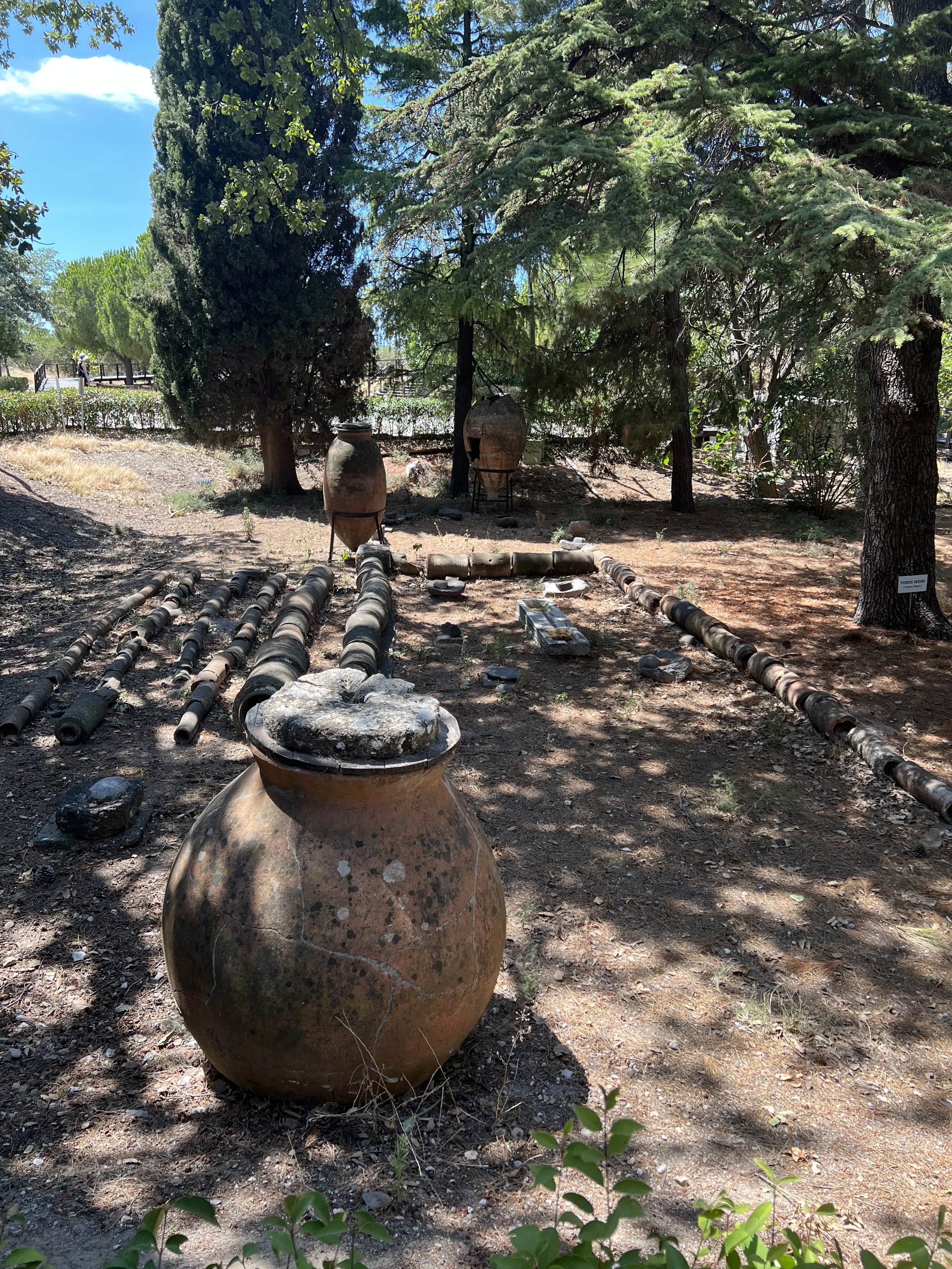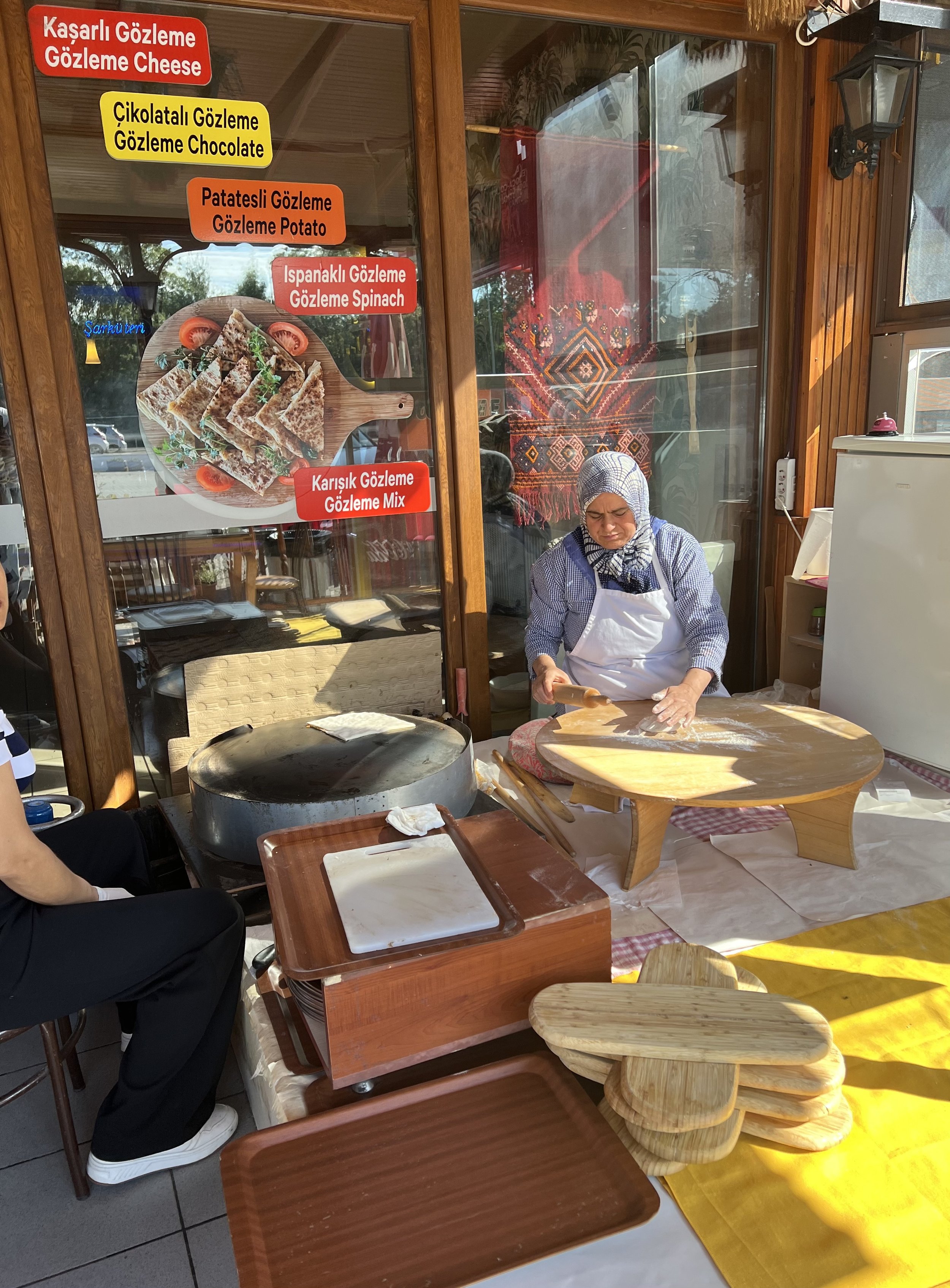Day 1: Troy
There was something magical and surreal to realize that I was standing mere steps away from — or perhaps even on the exact same spots — where mythological figures such as Odysseus, Aeneas, Briseis, Helen, Achilles, and Hector once stood.
My day began early this morning on my way to the start of Odysseus’ journey: the Trojan War. As a side note, I realized I was sort of completing the path of the Iliad as well, as a result of having traveled from Athens/Greece to Troy. In any case, on three hours of sleep, I woke up at 5:20am, quickly got ready and got dressed, heading out the door at 5:45am in Istanbul, where I’m staying at a hotel in the Beyoglu area. The bus picked me up at 5:50am before picking up a few others — and then, we started on our way to Eceabat, where the modern-day location of Troy is thought to be, and which is located in the broader port city of Canakkale around 4 hours southwest of Istanbul. Our bus stopped midway to Canakkale at a rest stop in Tekirdag around 9am, where I enjoyed a minced chicken gözleme and a cappuccino for the equivalent of $6.
I had feared that being in transit for so long on some of my stops on this journey would feel like a “waste” of valuable time — or what if someone, upon hearing me share my stories, responds even out of good faith to suggest “well, what did you really experience if you were sitting in transit for so long?” I feared feeling that way myself would somehow discredit anything I accomplish here. Yet while riding to Eceabat, I felt relieved to not feel that way at all. Firstly, as I have learned over the last three years, it is perfectly okay to take time to “do nothing” in a culture where we constantly glorify productivity and results — especially while on vacation. Not only did that lesson feel entirely reaffirmed and my fears assuaged, but the downtime allowed me precious moments to do what felt most important: reflecting and allowing myself to truly grasp the weight of the moment, of a long-held dream finally becoming concrete, and to tie together for myself the strands in my life that had to emerge for me to get here. I will save some of these more philosophical reflections for an essay at the end of my travels.
The drive to Eceabat was filled with luscious farmland and beautiful sea views, with small shops and residences popping up along the way. At around 11:15am, we finally reached Eceabat— located on the European side of Canakkale, bounded by the Dardanelles from below, separating it from the Asian side where the ruins of Troy are. After checking in with the tour company, our guide took us to lunch at a restaurant by the water, and I mostly conversed with a few travelers from London and Sydney. After lunch, we hopped on another quick bus ride down to Kilidulbahir, where we took a ferry across the Dardanelles to arrive on the Asian side of Canakkale around 1pm. We first stopped in the city center, where the prop Trojan Horse from the film Troy (2004) is prominently displayed (see: the first photo of this post). Then, we hopped on another bus ride down to finally reach our long-awaited destination: the archaeological ruins of Troy:
Here, our tour guide rehashed some mythology and history I already knew — then led us around the ruins. As a refresher, Troy exists in layers that were built on top of one another — each representing a different phase of its history, with the bottom being the oldest and the top being the most recent. Notably, one element that immediately struck out to me was how distinctive the architectural styles and layers are between the different phases. You can see this distinct dichotomy in the third picture above, where the left bricks are from Troy VII (the Homeric Troy) and the right are from Troy VI. My favorite part was the South Gate from Troy VI-VII, shown in the first picture, through which the Trojan Horse would have been brought and for which there was a beautiful accompanying illustration on the sign that imagined what it may have actually looked like around 1250 BC.
In the second picture, one can see where more elements from the Iliad reside: the field furthest out is where Achilles would have set up camp before his decision to fight in the war, the field in front of that is where Achilles would have dragged Hector around on his chariot, and the closest field is where the Trojan Horse would have first been kept before it was brought into the city perimeter via the South Gate.
The last three pictures show the replica of the Trojan Horse on the excavation site (unfortunately, undergoing reconstruction at the moment), portions of the ceiling decor of the Temple of Athena that Alexander the Great constructed during the Hellenistic Period, and pipes from Troy IX and vessels from Troy VII.
After we finished exploring, we did the reverse order of how we got there: bus, then ferry, then bus again, stopping midway again in Tekirdag, where I tried sutlac before finally reaching my hotel around 9pm.
It’s now just after 10pm and I’m headed out to quickly check out a little of the bar scene in Istanbul, so I’ll be back with another update tomorrow, but here are some pictures of the gözleme and sutlac:









